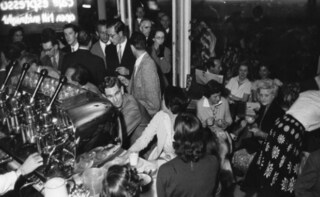When coffee was cool ... the Moka Bar in Soho in the 1950s. Photograph: Hulton Getty
Advertisement
For the latest food news, health tips and recipes, like us on Facebook or follow us on Twitter and YouTube.
Advertisement
Tags:
